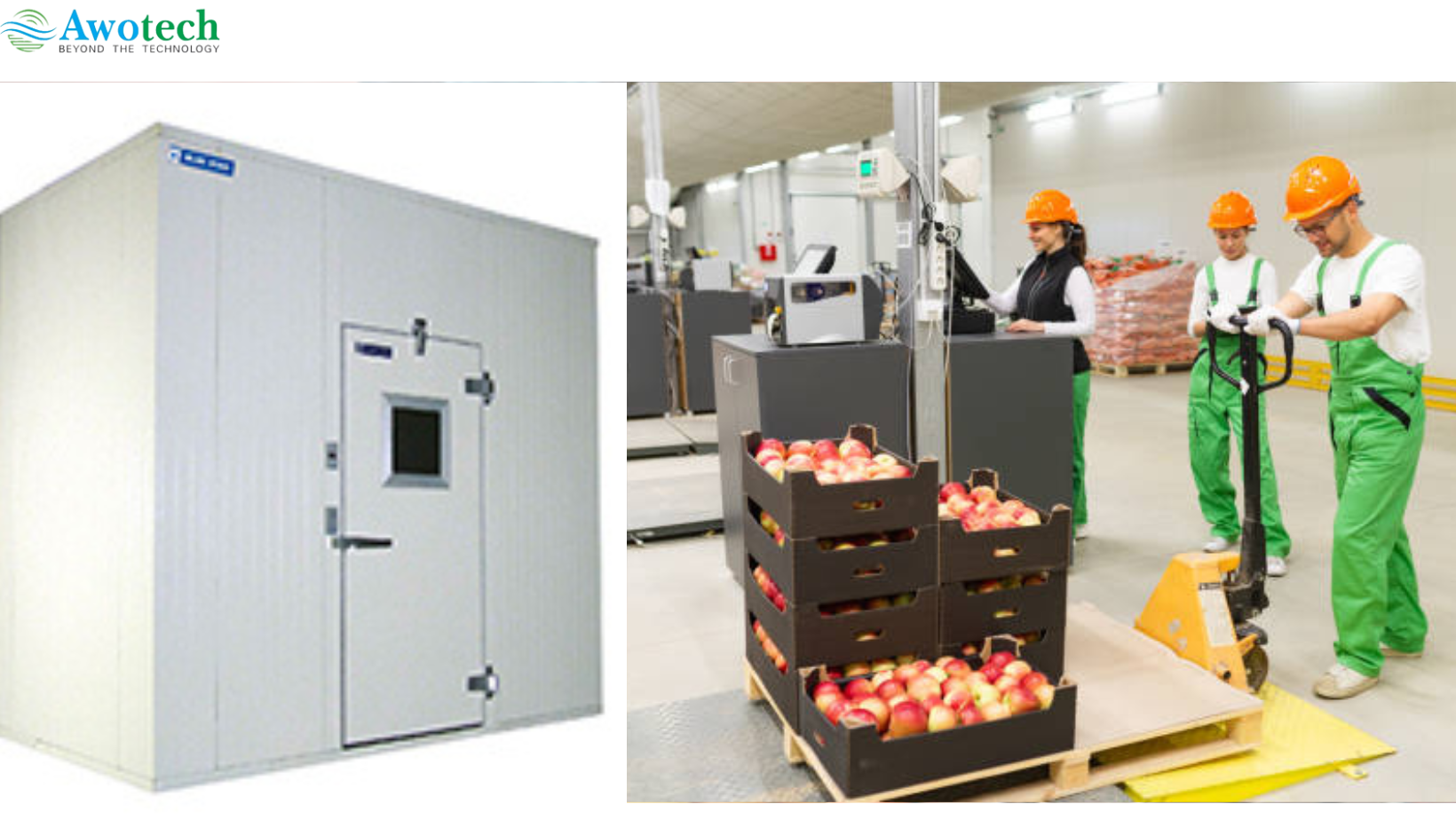cold room for fruits and vegetables
Awotech makes best Chilling for fruits and vegetables in India

Cold storage for fruits and vegetables is an important aspect of preserving their quality and extending their shelf life. Here are some key points to consider when it comes to cold storage for fruits and vegetables:
Temperature: Most fruits and vegetables require specific temperature ranges for optimal storage. Generally, temperatures between 32°F (0°C) and 55°F (13°C) are suitable for most produce. However, different types of fruits and vegetables have specific temperature requirements, so it's important to consider their individual needs.
Humidity: Maintaining proper humidity levels is crucial for preventing moisture loss or excessive moisture buildup, which can lead to spoilage. Generally, fruits require higher humidity levels (80-90%) to prevent dehydration, while vegetables need lower humidity (65-75%) to prevent decay.
Ethylene sensitivity: Some fruits and vegetables produce and are sensitive to ethylene gas, which can accelerate ripening and spoilage. It's important to store ethylene-producing fruits (such as apples, bananas, and pears) separately from ethylene-sensitive vegetables (such as lettuce, broccoli, and carrots) to avoid premature spoilage.
Air circulation: Good air circulation is essential to prevent the buildup of carbon dioxide and ethylene, as well as to maintain consistent temperature and humidity throughout the storage area. Adequate ventilation helps reduce the risk of mold and fungal growth.
Packaging: Fruits and vegetables should be stored in appropriate packaging to maintain freshness and prevent damage. Perforated plastic bags or containers are commonly used to strike a balance between maintaining humidity and allowing for some airflow. Avoid storing fruits and vegetables together in sealed plastic bags, as this can lead to the accumulation of moisture and mold growth.
Separation: Some fruits and vegetables release natural gases that can affect the quality of neighboring produce. It's advisable to store different types of fruits and vegetables separately to minimize cross-contamination and maintain their individual freshness.
Pre-cooling: It's beneficial to pre-cool fruits and vegetables before storing them in cold storage. Pre-cooling involves rapidly reducing the temperature of produce soon after harvest to remove field heat. This helps prolong shelf life and maintains quality during storage.
Monitoring and rotation: Regularly monitor the temperature, humidity, and condition of fruits and vegetables in cold storage. Implement a system for first-in, first-out rotation to ensure older produce is used before newer arrivals.
Contact For Cold Room Fruit and Vegetable,Manufacturing Unit Awotech
